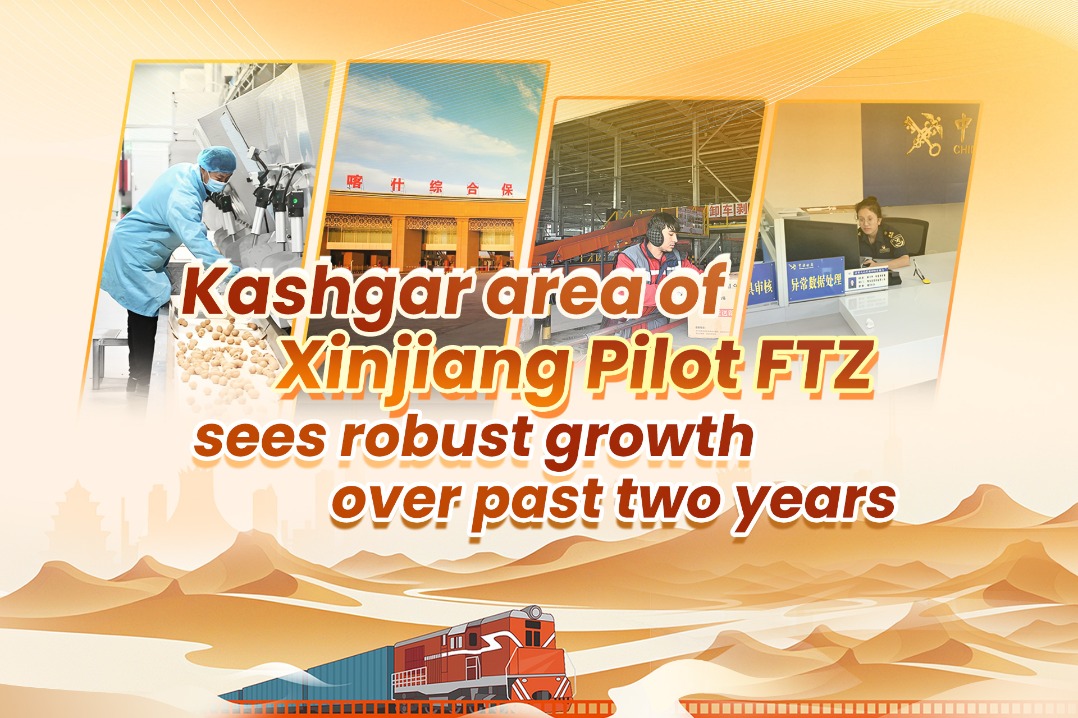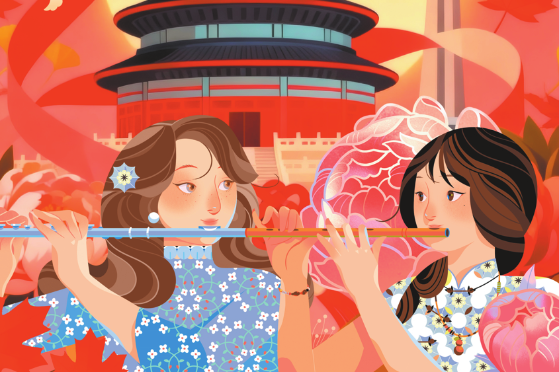Historical Matters Concerning Xinjiang

II. Xinjiang Has Never Been 'East Turkistan'
The Turks (Tujue in Chinese) were nomads who originated in the Altai Mountains in the middle of the 6th century. The Turks annihilated the Rouran and established a Turkic khanate in 552, which split into two forces, settling on either side of the Altai in 583. The Tang Dynasty defeated the Eastern Turkic Khaganate (583-630) in 630, and joined forces with the Ouigours to eliminate the Western Turkic Khaganate (583-657) in 657, thus uniting the Western Regions under central rule. In 682, the remnants of the Eastern Turks that were relocated in the north rebelled against the Tang court and established the Second Turkic Khaganate (682-744). This was quelled by the Tang in 744 with the help of the Ouigour and Karluk peoples in Mobei (the area north of the vast deserts on the Mongolian Plateau). Kutlug Bilge Khagan, leader of the Ouigours, was granted a title by the Tang court, and established a khanate in Mobei. In the late 8th century, the nomadic Turks dissolved as its last khanate collapsed. They mixed with local tribes during their migration to Central and West Asia, but these newly formed peoples were fundamentally different to the ancient Turks. Ever since then, Turks have disappeared from China's northern regions.
Never in Chinese history has Xinjiang been referred to as "East Turkistan", and there has never been any state known as "East Turkistan". From the 18th century to the first half of the 19th century, as the West made a distinction between the various Turkic languages (branches of the Altaic languages), some foreign scholars and writers coined the term "Turkistan" to refer to the region south of the Tianshan Mountains and north of Afghanistan, which roughly covered the area from southern Xinjiang to Central Asia. They called the two areas on either side of the Pamirs "West Turkistan" and "East Turkistan". At the turn of the 20th century, as "Pan-Turkism" and "Pan-Islamism" made inroads into Xinjiang, separatists in and outside China politicized the geographical concept and manipulated its meaning, inciting all ethnic groups speaking Turkic languages and believing in Islam to join in creating the theocratic state of "East Turkistan". The advocacy of this so-called state has become a political tool and program for separatists and anti-China forces attempting to split China.
III. The Ethnic Groups in Xinjiang Are Part of the Chinese Nation
Historically, the Chinese nation was formed and developed through cultural communication, exchanges and integration between peoples in the Central Plains and in other regions. The Huaxia people who appeared in the pre-Qin period, after years of integration with various other peoples, and especially after 500 turbulent years of cultural convergence in the Spring and Autumn and Warring States periods, further integrated with other peoples in the Qin and Han dynasties to form the Han people, a majority group in the Central Plains and the major people in Chinese history. In the period of the Wei, Jin, and Northern and Southern Dynasties, different peoples, especially the northern ethnic minorities, migrated on a large scale to the Central Plains, resulting in further ethnic merging. In the 13th century, with the founding of the Yuan Dynasty, an unprecedented level of political unification gave rise to unprecedented ethnic migration, leading to various ethnic groups living together within the Yuan territories.
After this long historical process, different ethnic groups of China eventually settled among each other, with compact communities here and there. Multiethnicity is a prominent feature of China. Together, the ethnic groups of China have explored the country's rich resources and vast territories, and have created a long history and a splendid culture.
Xinjiang has been in close contact with the Central Plains since ancient times. As early as the Shang Dynasty, the Western Regions traded jade with the Central Plains. In the Han Dynasty, imperial envoy Zhang Qian opened up the Silk Road, along which emissaries and merchants traveled. In the Tang Dynasty, merchants from the Central Plains and the Western Regions traded silk and horses, and a grand thoroughfare connected the Western Regions directly to Chang'an, the Tang capital, with courier stations along the way. Music and dances from Khotan, Gaochang and other places in the Western Regions were performed in the Tang court, and the exotic cultures of the Western Regions were popular in Chang'an. The music of Qiuci (today's Kucha, Xinjiang) enjoyed great fame in the Central Plains, and became an important component of court music in the Sui, Tang and Song dynasties. In modern times, at critical junctures of the Chinese nation, the ethnic peoples in Xinjiang have fought alongside the rest of the country with great patriotism. Since the founding of the PRC, ethnic relations in Xinjiang have entered a new era characterized by equality, solidarity, mutual help, and harmony.
Xinjiang has been a multiethnic region since ancient times. The earliest explorers of Xinjiang included the Sai, Rouzhi, Wusun, Qiang, Qiuci, Yanqi, Khotan, Shule, Shache, Loulan and Cheshi peoples living in the Tianshan Mountains and the Xiongnu and Han peoples in the pre-Qin, Qin and Han dynasties. Following them were peoples of the Han, the Xianbei, Rouran, Gaoche, Yeda, and Tuyuhun in the period of the Wei, Jin, and Northern and Southern Dynasties; of the Turk, Tubo, and Ouigour in the period of the Sui and Tang dynasties; of the Khitan in the period of the Song, Liao, and Jin dynasties; of the Mongol, Jurchen, Dangxiang (Tangut), Kazak, Kirgiz, Manchu, Xibe, Daur, Hui, Uzbek, and Tatar in the period of the Yuan, Ming and Qing dynasties. Large numbers of various ethnic groups entering Xinjiang in different periods brought technology, culture and ideas, folk customs, and many other aspects of their lives into the region, promoting economic and social development through exchanges and integration. They were all explorers of Xinjiang. By the end of the 19th century, 13 ethnic groups-the Uygur, Han, Kazak, Mongol, Hui, Kirgiz, Manchu, Xibe, Tajik, Daur, Uzbek, Tatar, and Russian-had settled in Xinjiang, with the Uygurs having the largest population. Ethnic groups had grown, developed and integrated with each other despite periods of isolations and conflict, and shared good fortune and hardship in a close relationship. All of them have made important contribution to exploring, developing and protecting Xinjiang, and they are all masters of Xinjiang. Currently inhabited by 56 ethnic groups, Xinjiang is one of the provincial-level administrative regions with the most ethnic groups in China. The Uygur, Han, Kazak and Hui have populations of one million and above, and the Kirgiz and Mongol have populations exceeding 100,000. Today, Xinjiang, home to various ethnic groups, is an integral part of the Chinese nation.
The evolution of ethnic relations in Xinjiang has always been linked to that between all ethnic groups in China. There have been periods of isolation and conflict, but exchange and integration, and unity and joint effort have always been the prevailing trend. The ethnic groups of China, including those in Xinjiang, live together alongside each other. They are economically interdependent and embrace each other's culture, and are a unified whole that has become impossible to separate. They are members of the same big family. In this family of the Chinese nation, the ethnic groups in Xinjiang are like brothers and sisters who work and live together and help each other out. They have guarded against foreign aggression, opposed separatist activities, and safeguarded national unification.


































